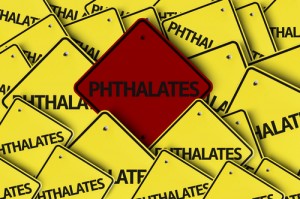 The convenience of plastic in our everyday lives have no doubt made our lives easier. It contains our food, our water, and protects us. That said, have we considered how much it has poisoned us?
The convenience of plastic in our everyday lives have no doubt made our lives easier. It contains our food, our water, and protects us. That said, have we considered how much it has poisoned us?
As favorable as plastics are in our world, there are some concerns to address. Namely, the chemicals that are emitted from plastic when heated. When this occurs, a group of chemicals, called phthalates (pronounced f-THAL-lates) which are sometimes added to plastics to make them flexible and less brittle, and can cause many health issues in humans and animals. Stamped with the #3 on the bottom of plastic sources, this should serve as a warning to beware of this dangerous group of chemicals. There are many types and names to this chemical group, among them DBP (di-n-butyl phthalate), DEP (diethyl phthalate), DEHP (di-(2-ethylhexyl) phthalate or bis (2-ethylhexyl) phthalate), BzBP (benzylbutyl phthalate), and DMP (dimethyl phthalate).
What Are Phthalates?
Phthalates are environmental contaminants that can exhibit hormone-like behavior by acting as endocrine disruptors in humans and animals. If you heat up plastics, you could increase the leaching of phthalates from the containers into water and food. Because they are not chemically bound to the plastics they’re added to, they’re continuously released into the air or food or liquid. Did you ever notice how plastic sometimes hardens over time? That’s because the phthalates have leached out of it.
On a side note, the presence of phthalates extends far beyond that of plastic bottles and containers. They are commonly used in personal care products, cosmetics, detergents, and cleansers.
You’ll find phthalates in perfume, hair spray, deodorant, almost anything fragranced (from shampoo to air fresheners to laundry detergent), nail polish, insect repellent, carpeting, vinyl flooring, the coating on wires and cables, shower curtains, raincoats, plastic toys, and your car’s steering wheel, dashboard, and gearshift. (When you smell “new car,” you’re smelling phthalates.) Medical devices are full of phthalates — they make IV drip bags and tubes soft, but unfortunately, DEHP is being pumped directly into the bloodstream of ailing patients. Most plastic sex toys are softened with phthalates.
…Phthalates are found in our food and water, too. They are in dairy products, possibly from the plastic tubing used to milk cows. They are in meats (some phthalates are attracted to fat, so meats and cheeses have high levels, although it’s not entirely clear how they are getting in to begin with). You’ll find phthalates in tap water that’s been tainted by industrial waste, and in the pesticides sprayed on conventional fruits and vegetables.(Source)
In fact, about a billion pounds of phthalates are produced every year, and so widespread that they are nearly impossible to avoid entirely. Indeed, 95 percent of us have detectable levels of phthalates in our urine.
How Are They Harmful?
So if they are in practically everything, they can’t be so bad, right? Wrong. Phthalates are thought to mimic and displace hormones and interrupt their production. This can have a range of unpleasant effects. The human health effects of phthalates are not yet fully known but are being studied by several government agencies, including the Food and Drug Administration, the National Institute of Environmental Health Sciences, and the National Toxicology Program’s Center for the Evaluation of Risks to Human Reproduction.
What are the potential health impacts of phthalates?
- DIP is listed as “reasonably anticipated to be a human carcinogen” by the National Toxicology Program.
- DEHP causes liver cancer in laboratory animals and the Environmental Protection Agency considers it a probable carcinogen.
- The National Toxicology Program also concluded that high levels of DINP may adversely affect human reproduction or development.
- High levels of exposure to DIP through the use of medical tubing and other plastic devices for feeding, medicating, and assisting the breathing of newborn infants may affect the development of the male reproductive system, according to the National Institute of Environmental Health Sciences.
- Other human and animal studies have found links to birth defects, decreased sperm counts and damaged sperm, increased risk of developing behavioral problems, premature birth, and respiratory difficulties in children with bronchial obstruction (such as asthma).
The good news is, this group of chemicals is getting a lot of attention. So much, in fact that the government has decided to take precautions and ban certain types of phthalates found in children’s toys. As of January 1, 2012, Congress has permanently banned three types of phthalates: DEHP, DBP, and BBP in any amount greater than 0.1 percent from children’s toys, child care articles designed to facilitate sleep or feeding of children age 3 and younger, or to help children age 3 and younger with sucking or teething. Additionally, they also temporarily banned three additional phthalates: DINP, DIDP, and DnOP in any amount greater than 0.1 percent from only toys that can be placed in a child’s mouth, child care articles designed to facilitate sleep or the feeding of children age 3 and younger, or to help children age 3 and younger with sucking or teething.
Avoiding plastics and products that are known to have this chemical group altogether may be our only hope at lowering its ubiquitous presence. Further, taking measures to avoid plastics labeled with the #3 on it and ensuring the products you buy are phthalate-free.
This article was originally published at Ready Nutrition™ on September 13th, 2014







So basically everything I use or come into contact in life I need to avoid, well brilliant.